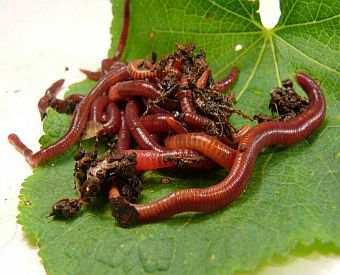The 8-Minute Rule for Red Wiggler Express
The 8-Minute Rule for Red Wiggler Express
Blog Article
The Single Strategy To Use For Red Wiggler Express
Table of ContentsA Biased View of Red Wiggler ExpressRed Wiggler Express Things To Know Before You BuyAn Unbiased View of Red Wiggler ExpressRed Wiggler Express Things To Know Before You Get ThisAbout Red Wiggler Express
It's secure to state this things would have been terrific to add as a to vermicomposting systems! And the flourishing Red Worm populace? It just never occurred. Also in the lot that was established directly in front of backyard composters with existing Red Worm swarms. Yet these nutritionally-boosted timber chip environments are definitely packed with Lumbricus sp.
Several selections, including Red Wigglers, European Nightcrawlers, and Lumbricus types were brought over from the European continent. Below's the thingNative or not - and as gifted as they are at being able to make it through in a wide-range of environments and problems -. Simply put, they are much more most likely to hang around in any energetic composting systems you have actually established, than they are to roam off and begin messing up the environment.
Roots require oxygen for respiration and count on smooth air movement within the soil to prosper. Nevertheless, when it rains, dirt can come to be saturated with water, minimizing the oxygen available and hindering nutrition absorption - Red Wiggler Express. To maintain an ideal balance, the dirt needs to allow water to drain pipes appropriately, leaving sufficient area for air to support root health
The Buzz on Red Wiggler Express

When it concerns worms for composting, what comes to mind? If you were an earthworm breeder, dealership, or plain garden enthusiast, after that you 'd understand that red wiggler worms are the suitable worms for vermicomposting. To find out even more concerning these planet wonders, checked out several of the red worm facts below.
(https://directory8.org/details.php?id=304793)If they extend their bodies, you'll be able to see the stripes on their skin. When increasing worms such as red wiggler worms, you should have the ability to understand exactly how to make great use of them. When you have the ability to preserve and take care of their habitat well, and likewise feed them the appropriate sort of organic wastes, then they'll be able to generate nutrient-packed and quality-rich worm spreadings for you (additionally called worm poop or compost).
The 8-Minute Rule for Red Wiggler Express
What do worms eat? Well, these red wriggler worms can be fed with kitchen area scraps and yard wastes.

This habits makes them well-suited for life in worm bins, compost piles, and other restricted areas where organic waste is abundant. Developing an ideal environment for red wigglers requires a thoughtful approach. Think about the complying with vital components to look after red wigglers in the house and ensure their wellness: Use a bed linens of shredded paper or cardboard.

Add a handful of dry, shredded paper if the container comes to be too wet. Certainly, they do! Red wiggler worms replicate by laying little, lemon-shaped eggs in protective cocoons. These cocoons are typically transferred in the bedding and hatch into baby worms within a few weeks. The fast reproduction cycle of red wigglers is just one of the factors they are favored for vermicomposting.
Facts About Red Wiggler Express Revealed
Their adaptability and resilience have made them a popular choice for vermicomposting in various regions around the globe. Consider safety steps for really extreme temperatures such as: Shielding the worm bin with layers of straw or leaves. Red Wigglers For Bait.

Simply remember - you can constantly add more food later on (but it's difficult to remove feed once it's been included to a bin!).
Due to the fact that I fed the red wigglers and garden compost worms way too much, they weren't able to maintain and gradually the older food went leftover and developed anaerobic conditions that eliminated the worms. The bright side is that there are really basic activities you can take to ensure this does not take place! Here're the 6 gold regulations for just how often and how much to feed your worms: Regulation # 1: Moderation! You can constantly include more food later on.
Red Wiggler Express - An Overview
Leftover food will lead to anaerobic conditions that will kill your online worms. It is ok to sprinkle a little of their original bed linens (which should already remain in the container) over the food, yet the food needs to never ever be hidden and must be noticeable to your eye. Regulation # 5: See policy # 1! Rule # 6: After the initial feeding, feed the worms 1/3 to 1/2 of their weight.
Report this page